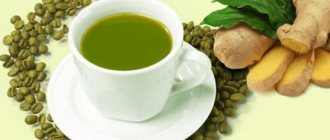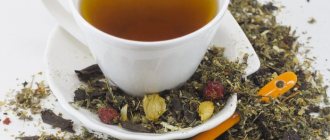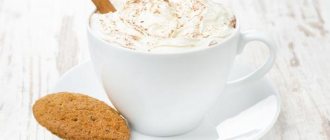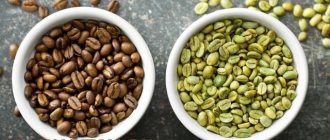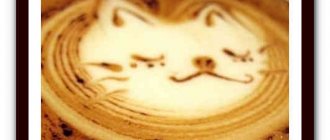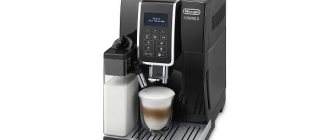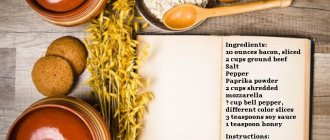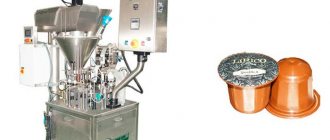We at Torrefacto had been nurturing the idea of expanding our range with new products for a long time, and one day, during another training session, we decided to arrange a “challenge” with Alexey German to develop and introduce new product groups.
Alexey’s gaze fell on cocoa and chocolate, and mine fell on tea, which at that time I had only been interested in for about a year.
Professional knowledge tended to zero and we both wanted to find mentors, interesting content, literature or courses in order to absorb as much knowledge as possible. As a result of a long search on the Internet, I met Anastasia Ofitserova, who became one of my teachers in tea. She has written fascinating articles about tea, detailed descriptions of varieties and always informative translations from Chinese on tea topics.
Nastya has written several articles for Torrefacto and today I would like to present you the first of them. Please, make yourself comfortable, next is Anastasia’s word.
My name is Nastya, I have been involved in tea for more than 15 years, five of which I lived in China. What brought me to the Celestial Empire was tea and the desire to learn about my favorite drink first-hand. Recently I became interested in talking about tea to coffee connoisseurs. This task gave rise to many questions, and in the search for answers, many unexpected conclusions were made. Communicating with the guys from Torrefacto, I discovered that coffee has become closer and more understandable, I have my own preferences in its preparation, but the most valuable thing is that my world has been enriched. I wanted to share my experience in tea so that you can add color to the palette of your everyday drinks.
Tea and coffee are not rivals. These are two of the most popular drinks in the world, which are an affordable and effective way to change our condition. What do we usually expect from coffee or tea? It depends on the person and the situation, but the list of desires is not endless and the most common are taste, aroma, regulation of state (vigor, relaxation, concentration), accompaniment of meals, leisure and participation in social rituals. Sometimes the differences between tea and coffee are a subject of debate and misunderstanding, but I am confident that if the weaknesses of one drink are offset by the strengths of the other, we will all benefit.
What should we talk about when comparing tea and coffee? What does it mean for those interested in tea and coffee culture?
Yuanyang recipe
In order to cook an unusual product, you will need ordinary ingredients. The first is black tea, preferably without flavorings; both bagged and loose tea will do. Arabica is used for coffee; experimenting with Robusta is not recommended. Condensed milk must be concentrated.
It is most convenient to prepare coffee and tea in a small saucepan. Water and tea should be placed on medium heat. You need to take either 4 bags or 2 tablespoons, depending on what form the tea is taken in.
When the contents boil, turn down the heat and cook for three minutes. The main thing is that the water does not boil anymore, otherwise the drink will not work. After this, the pan must be removed from the heat. After cooling, add 1 teaspoon of condensed milk.
The next step will be coffee. Usually an amount equal to the amount of tea is taken. There should be a lot of coffee. The contents must be mixed thoroughly.
Typically, baristas, during the cooking process, replace condensed milk with regular milk or cream. This is just one of many options for preparing the drink. No one will forbid you to carry out experiments. Some people take a whole can of condensed milk, others say that the result is too sweet yuanyang.
Tea and coffee: you can drink it, but within reasonable limits
Judging by our experiments, Hong Kong tea and coffee are actually tasty and interesting. It is worth using black tea, possibly with various flavors. It doesn't work out very well with green, and such a cocktail clearly needs some additions. But on the other hand, it is incredibly invigorating and useful for weight loss (you should drink a little after eating), you should not risk it on an empty stomach, you can get an overdose of caffeine (rapid heartbeat, trembling hands).
Another disadvantage of such drinks is that in their pure form they are not very tasty (except for hibiscus with coffee), which means they need sweeteners, condensed milk, and possibly whipped cream. This makes the drink quite high in calories.
Our verdict: you can mix tea and coffee, but you definitely shouldn’t drink a lot of it. But in order to surprise guests, this is a great option! Try and experiment, discovering something new.
Bubble tea
It is popularly called Boba tea. Also popular is the name bubble and pearl tea. Black or green tea is suitable. There are dozens of flavors. Tea is infused with syrups, cream, plants, or fruit extracts. All ingredients are whipped and mixed together.
This special tea originates from Taiwan. The first experiments were carried out in the 1980s. At first, the number of ingredients was limited, as were coffee and tea. It was regular tea mixed with fruit syrup. Later, it became popular to add tapioca balls filled with juice. The drink turned out beautiful and tasty.
Worldwide distribution occurred later when the tea found its way into the Japanese media. The main countries that have tasted Taiwanese tea are the USA, Australia and China. Among the European countries, England and Germany stand out. Russians also love to drink the drink in cafes. You can try it in almost all major cities.
More: Instant coffee Armel and reishi mushroom to strengthen the immune system
What unites the two cultures?
An educational and developmental function, because the main task of any culture is the development, enrichment and transmission of the cultural code. Both tea and coffee, turning into a serious hobby, force you to study the “material parts”, that is, botany, chemistry, geography, history and processing technology, and further ad infinitum to the extent of your meticulousness. Even simply drinking a drink, if you don’t take into account the “three in one” and “bag” options, gives a chance to develop taste: the better the taste is developed, the more pleasure we get from drinking. Advanced coffee and tea lovers perceive the world of taste richer than those who are not accustomed to distinguishing shades, and, what’s nice, this skill transfers to other areas of life.
Preparing the drink
The first thing you pay attention to when trying to articulate the difference between the two cultures is the approach to preparing the drink. And if making tea is, first of all, “find your taste and learn to do it the way you like,” then with coffee it’s more like “find your taste and learn to do it right.”
Coffee preparation is highly standardized, with a widespread profession - the barista. The profession of “tea master” did not officially exist until recently, even in China; it was formalized at the legislative level only a few years ago, when a package of necessary knowledge was determined, a curriculum was drawn up, and a textbook was published.
The attitude to making tea among tea people is well described by the common phrase “my shepherd* - my rules” (*shepherd is a board with a tray on which tea is brewed). And one more: “drank - understood,” which literally means that the best way to understand tea is to try it yourself. Preparing tea is often based on intuition and good knowledge of the product: an experienced “tea maker” pours tea into a vessel, measuring the amount “by eye”, and determines the degree of readiness by the color of the infusion, measuring the time according to sensations.
To make “cool” coffee, a whole bunch of gadgets are often used: thermometers, scales, refractometers, TDS meters and titration kits. There are a lot of devices, machines and special utensils for coffee, the handling of which often requires training. Despite the existence of precise recipes, coffee is often more difficult to prepare than tea. “Cool” tea preparation - spring water, cooked on the coals of special types of trees, boiled in a silver teapot - what was described in the “Tea Canon” a thousand years ago. The most common tableware has existed for a long time, and innovations take root in an extremely limited format.
Of course, tea can be different: tea shops usually use scales and a thermometer for water, but if tea is brewed for yourself and friends, this approach is much less common. Tea has its geeks and lovers of precision, and every person who has been involved in tea for a long time has had the experience of measuring the hardness and temperature of water, and weighing tea. But a more common option is when the degree of readiness of water is determined by the noise in the kettle and the size of the bubbles on the surface - and this knowledge has been with tea lovers for ten centuries.
Perhaps the point is in the very matter of tea, in the fact that it is very changeable, the same variety has a lot of variations, the tea itself changes greatly over time and is drunk completely differently even in different weather conditions. What suited this tea yesterday may simply not work today in the rain.
What common? For both tea and coffee, the water in which they are prepared plays a huge role. Coffee needs very soft water (from 30 to 120 mg/l), tea needs harder water (200-500 mg/l). Different types of coffee and types of tea require different water. In both cases, the issue is resolved by a simple experiment, the complexity of which is determined by the meticulousness of the experimenter.
Coffee for geeks
Created by Dave Iceprey. For tourism purposes, the American visited Tibet and tried milk tea, which inspired him to create a new recipe. He took coffee as a basis, since he loved it more than tea. Milk and sugar added calories to the drink, so it was decided to abandon them.
The experiments took several years. The result was a drink consisting of 1-2 tablespoons of butter, and the same volume of vegetable oil with STC. Thus, coconut oil, which negatively affects the taste, was replaced.
Thanks to its unique composition, the drink has lost its toxicity. It is quickly absorbed by the body, giving energy. Dave decided to use only organic oil.
The natural drink quickly became popular in the United States and was appreciated in Silicon Valley. In English it is called Bulletproof coffee.
The best recipes for tea and coffee cocktails
Of course, amateur experiments are interesting, but there are many popular recipes for such mixtures.
For you:
Turkish coffee recipes
Chai Eggnog Latte from Starbucks (or Eggnog Latte)
In European coffee shops of the Starbucks chain in winter they serve the following cocktail:
- 200 milliliters of tea with spices;
- a cup of espresso;
- egg yolk, beaten with sugar;
- a pinch of nutmeg.
Beat the yolk together with sugar until it forms a strong foam. The tea is brewed with the addition of cardamom, cinnamon, cloves and star anise. Mix with espresso and top with egg foam sprinkled with nutmeg.
With the addition of lemon and honey
A popular remedy for colds and flu consists of:
- a cup of brewed tea;
- a portion of coffee;
- one tablespoon of honey;
- slice of lemon.
First, mix tea with any coffee and wait until the mixture reaches a temperature at which you can drink it without fear of getting burned. And only after that they put honey in it so that it does not lose its medicinal properties due to thermal effects. After thoroughly stirring the honey, add a slice of lemon or its juice.
Yuanyang from Hong Kong
That very drink personifies the ideal union of two principles. It can be made either according to the classic recipe or simplified a little.
- any black tea (it’s better to take loose tea, but bagged tea will do);
- a portion of coffee;
- milk and condensed milk.
More tea is added to this cocktail than coffee - the proportions are usually approximately 60 to 40 or 70 to 30. The tea is boiled in boiling water for about 5 minutes, then condensed milk is added to it to taste and left on low heat for another couple of minutes. Add milk and prepared coffee.
Chaisuma
In Tibet, Chaisuma is extremely popular. The basis of the drink is yak milk, to which butter and salt are added. It adds energy, warms you up in the cold and gives you satiety.
Traditionally, it takes a long time to prepare. First, the tea leaves are boiled for 3 hours, then the tea is poured into a churn, where other ingredients are added, resulting in a thick mixture.
Thanks to tourists and climbers who visited Tibet, the whole world drinks butter tea.
Beneficial properties of green tea for weight loss
Thanks to its unique biochemical composition, the tea drink effectively improves the condition of the most important internal organs . It normalizes intestinal function, stimulates the elimination of waste and toxins.
Regular consumption of green tea helps cleanse and activate metabolism , as a result of which the body begins to actively “burn” its own fat reserves. The drink has a mild diuretic and laxative effect.
Compound
Green tea contains many biologically active, natural components . These include:
- vitamin complex;
- minerals;
- catechins;
- tannin.
Green tea also contains a wide range of vitamins, micro- and macroelements , amino acids and antioxidants.
Effect on the body
Catechins, when combined with theatine and other active ingredients, provide benefits to the body . Their impact:
- Improves the functioning of the intestines and the entire digestive system.
- Relieves constipation and normalizes stool.
- Protects against regular stress.
- Strengthens the walls of blood vessels.
- Protects skin and internal organs from premature aging.
Green tea contains a large amount of antioxidants that have anti-aging effects . They reduce signs of aging and protect the body from harmful environmental factors.
Beneficial properties of coffee for weight loss
Natural coffee beans and green tea contain caffeine, as well as a number of other similar components . Therefore, these drinks have approximately the same effect on the body.
But you need to remember that coffee has a higher caffeine content, due to which it has a more pronounced invigorating and tonic effect on the nervous system. Therefore, most nutritionists agree that the choice of drink depends solely on the taste preferences of the person losing weight.
Compound
Natural coffee contains several dozen active plant components , due to which this drink is widely used in the field of nutrition:
- caffeine;
- chlorogenic acid;
- fatty acid;
- tannins;
- mineral components;
- stearins;
- tocopherols.
The aromatic grains also contain substances that help reduce appetite and lower blood glucose , have a mild diuretic effect and help fight swelling.
Effect on the body
Black coffee normalizes lipid metabolism in the liver, reducing the load on this organ . Caffeine, which is found in both coffee and green tea, accelerates the production of lipase, a digestive enzyme that promotes rapid digestion of food.
And chlorogenic acid is considered one of the most powerful and effective “fat burners ,” which is why it is included in many dietary supplements and weight loss medications.
GLOWING SKIN
If you have problem skin - acne, pimples - a dermatologist may recommend that you, first of all, give up coffee. The coffee drink dilates blood vessels, which immediately affects the skin. A large amount of caffeine makes the face faded, dull and unhealthy in color. Coffee can also cause an increased reaction to stressful situations, and this immediately affects hormones. And, of course, on the condition of the skin. You can replace coffee with matcha latte. And that's why.
The words that matcha has a positive effect on the condition of the skin are the pure truth, and not a marketing ploy. It is important to remember that we are talking specifically about the consumption of tea, and not tablets or cosmetics that supposedly contain its extracts. The Department of Dermatology at Yakhroma University of Medical Sciences (Iran) conducted a series of studies that showed that “topical use of green tea is potentially effective in atopic dermatitis and acne.” This means that matcha, instead of coffee, acts on several fronts at once: on the internal, it cleanses the body of free radicals and relieves inflammation, on the external, in the form of compresses and masks, homemade, of course. As they say in such cases, note to the hostess.
